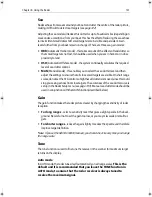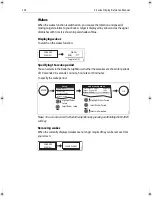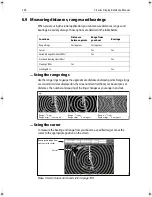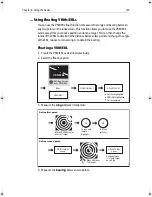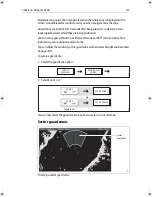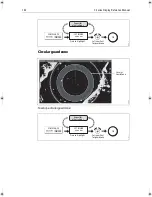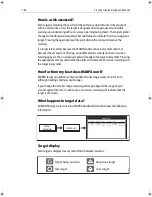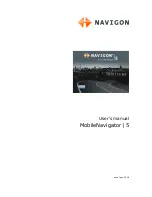
Chapter 6: Using the Radar
143
MARPA
SAFETY NOTICES
MARPA can improve collision avoidance when used wisely. It is the User’s
responsibility to exercise common prudence and navigational judgements.
There are conditions where acquiring a target may become difficult. These same
conditions may be a factor in successfully tracking a target. Some of the conditions are:
• The target echo is weak. The target is very close to land, buoys or other large targets.
• The target or your own ship is making rapid manoeuvres.
• Choppy sea state conditions exist and the target is buried in excessive sea clutter or
in deep swells.
• Choppy sea state conditions exist yielding poor stability; own boat’s heading data
is very unstable.
• Inadequate heading data.
Symptoms of such conditions are that acquisition is difficult and the MARPA vectors
are unstable; the symbol wanders away from the target, locks on to another target or
changes to a lost symbol target.
If any of these conditions are present, acquisition and tracking may need to be re-
initiated or, in some cases be impossible to maintain. Improving the quality of the
heading data will reduce the effect of the other conditions.
Introduction to MARPA
You can use the Mini Automatic Radar Plotting Aid (MARPA) functions for target
tracking and risk analysis. MARPA improves collision avoidance by obtaining detailed
information for up to 10 automatically tracked targets and provides continuous,
accurate and rapid situation evaluation.
MARPA automatically tracks acquired targets, calculates target bearing and range,
speed and course, Closest Point of Approach (CPA), and Time to Closest Point of
Approach (TCPA).
Each target tracked can be displayed with a CPA graphic which shows the target
vessel, course and speed (as a vector) and indicates the CPA. The calculated target
data can also be shown on your screen. Each target is continually assessed and an
audible alarm is sounded if a target becomes dangerous, or is lost.
Effective MARPA operation is dependant on accurate own-ship’s heading and speed.
Speed Over Ground (SOG) and Course Over Ground (COG) information are required to
show true target course and speed. The better the quality of the heading and speed
data, the better MARPA will perform. MARPA will function without SOG and COG in
relative mode. For the best heading data a Raymarine SMART heading sensor or a
gyro-stabilized autopilot is required.
81221_4.book Page 143 Tuesday, February 28, 2006 5:24 PM
Summary of Contents for C-Series
Page 1: ...C Series Display Reference Manual Document number 81221_4 Date March 2006...
Page 42: ...28 C Series Display Reference Manual...
Page 170: ...156 C Series Display Reference Manual...
Page 176: ...162 C Series Display Reference Manual...
Page 180: ...166 C Series Display Reference Manual...
Page 216: ...202 C Series Display Reference Manual...



